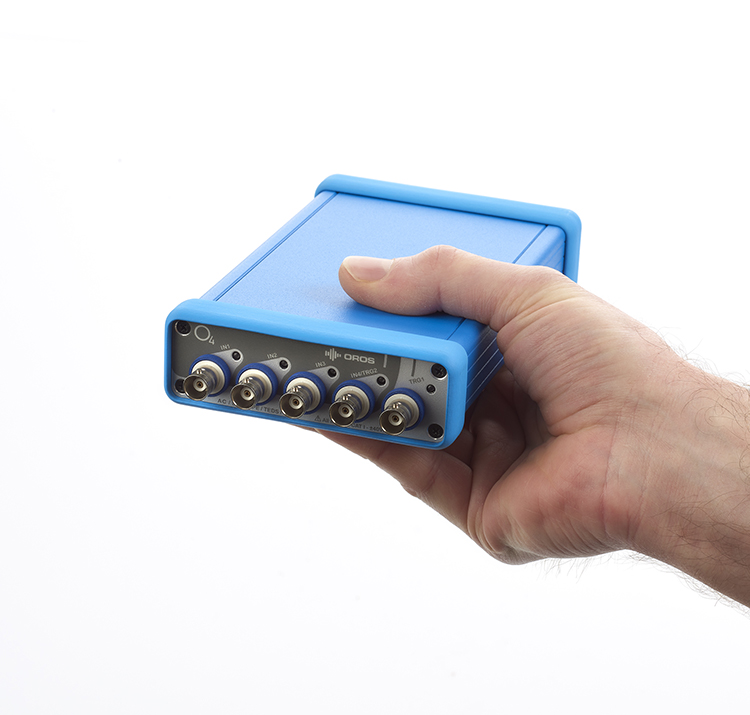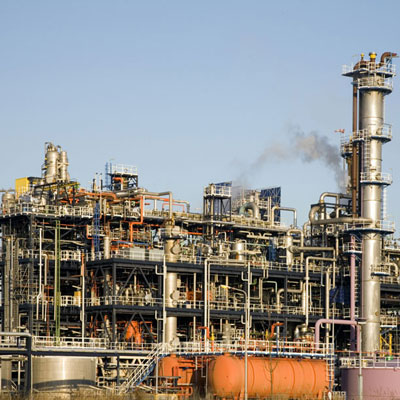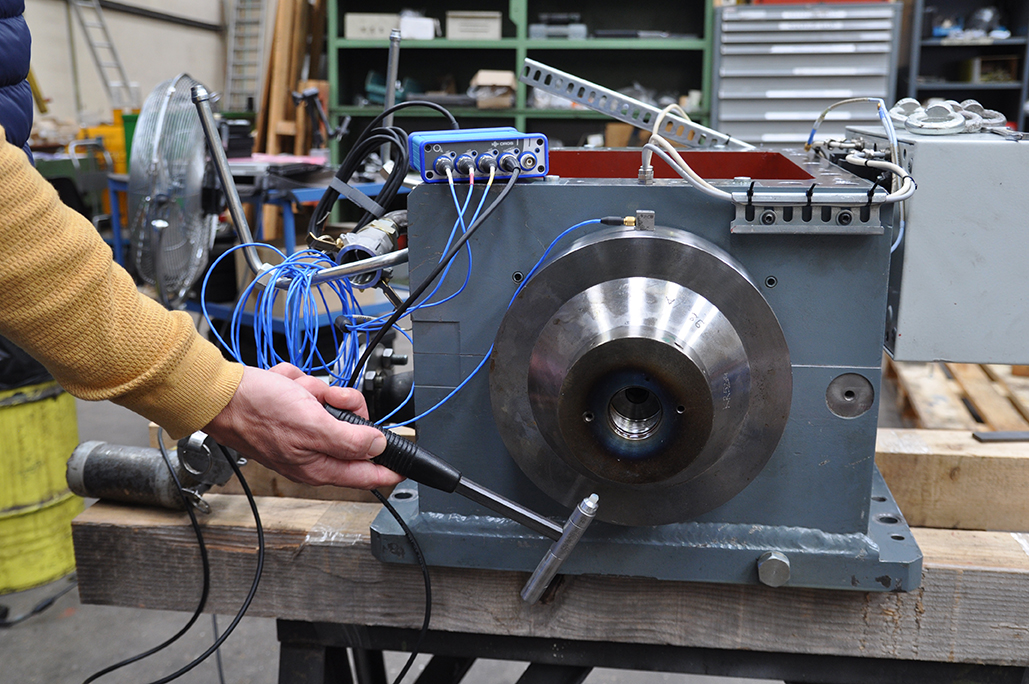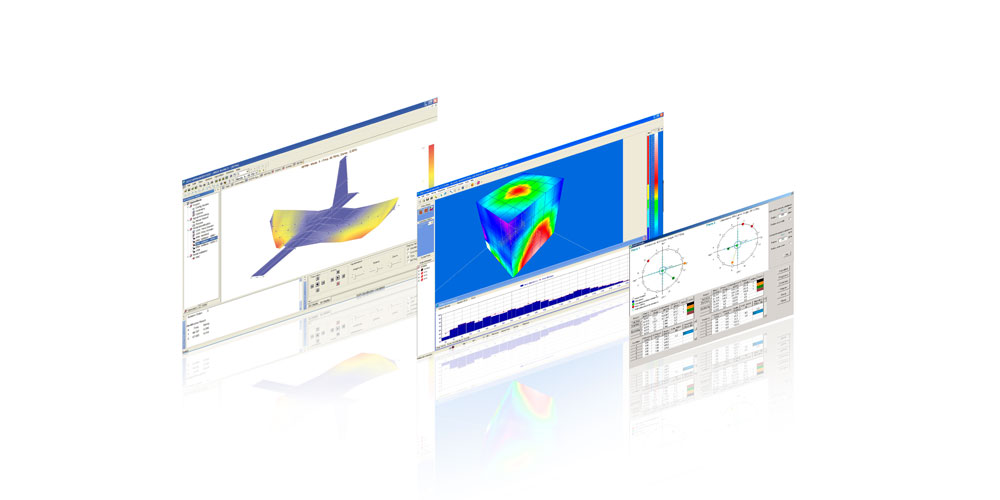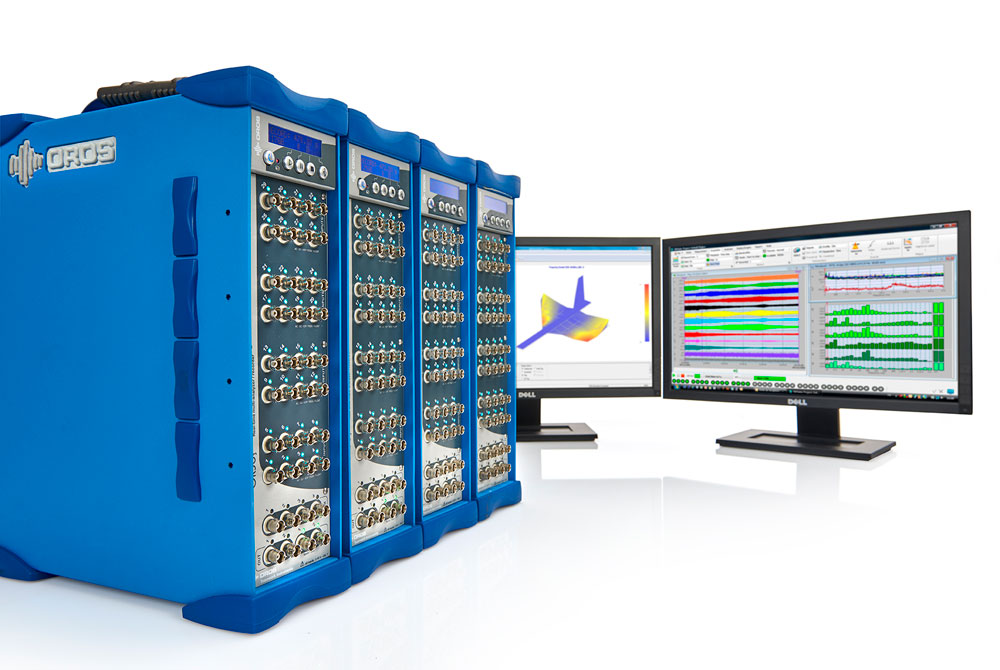
Modal analysis and Operating Deflection Shape (ODS) analysis
Structural dynamics is a type of structural analysis which finds out the behavior of a physical structure when it is subjected to dynamic loading.
It includes Operating Deflection Shape (ODS) analysis and modal analysis, which shows the actual deflection patterns under certain operating conditions and identifies the inherent dynamic properties of a structure, respectively.
Modal analysis is a powerful technique for understanding structural behavior to validate simulation results, mechanical designs and maintenance.
Datasheet
First be logged into myOROS
or quickly create an account
Our catalog
Download the latest version
First be logged into myOROS
or quickly create an account
Modal analysis and Operating Deflection Shape (ODS)
Software module
Modal testing solution is a comprehensive package for modal experts as well as novice engineers.
OROS Modal analysis is an application-oriented software associating the latest algorithms with a user-friendly interface and automatic procedures for Operating Deflection Shape (ODS) and modal parameter identification.
Geometry builder
The software contains several functions to create a geometry in order to match any machines. Predefined standard elements (circle, cube, cylinder …) are available as well as a dedicated interface to create a geometry manually. The local coordinates systems (Cartesian, cylindrical, spherical) allow to define the correct directions on each measurement points. A geometry can also be imported from others software (experimental and simulation software).
Data acquisition
Data acquisition is a critical step for modal analysis: without correct data, no exploitable results. Thanks to the direct acquisition implemented in Modal, enjoy the Teamwork analyzers power and accuracy with a dedicated interface for structural acquisition. The interface works with the different excitation modes: impact hammer, shaker, operating excitation.
To excite a large structure, up to 6 shakers per analyzers can receive signals from generators outputs. In order to fit the wide range of potential cases, the complete series of excitation signals from random, chirp, swept sine, stepped sine to normal modes can be generated.
For high channel count applications, Teamwork technology cascades several analyzers together to acquire simultaneously hundreds of channels. Teamwork instruments guarantee an efficient instrumentation thanks to the different possible configuration. For example, this flexibility allows to highly reduce the cable length by distributing the instruments along the structure under test.
In the case of using several analyzers, the number of generators is multiplied by the number of systems and a high cross phase accuracy between units <+/-0.2° is guaranteed.
The sequencer, the geometry display, the control of the generators, the double hit detection are examples of functions that make the acquisition easier. To check data validity, several results are available to control the acquisition. Frequency Response Functions (FRFs), spectra, coherence and triggered blocks can be displayed in one layout during the measurements.
Operating Deflection Shape
The Operating Deflection Shape module allows to visualize the behavior of a structure under operating conditions, when it’s excited by its own source. Time and frequency domain animations are available. In the frequency domain the Modes Identifications Functions (MIF) are used to display the response of the structure at each defined frequency. The mode shape at each frequency corresponds to the linear combination of all the modes that contribute to the total response of the system.
Modal Analysis
Modal analysis can be conducted via artificial excitation, e.g., shaker or instrument hammer excitation. Input force and output responses are measured. This is called an Experimental Modal Analysis (EMA). The EMA approach can be divided into three levels based on Single Input Single Output (SISO), Single Input Multiple Output (SIMO), Multiple Input Multiple Output (MIMO).
Modal is born with MIMO analysis. However, SIMO algorithm is also implemented for simple applications. MIMO EMA has important advantages: not only consistent results can be obtained, but close spaced and even repeated modes can be identified.
Modal analysis can also be accomplished during operational conditions of a mechanical structure via responses measurements due to ambient or natural excitation, or other excitation but without input force measurements. This is called as Operational Modal Analysis (OMA).
EMA and OMA methods are implemented in the software. The implemented methods have been chosen regarding their efficiency. They belong to the following categories:
- MDOF methods:
Based on the assumption that each resonance peak in the measured frequency response functions can be viewed as the summed contribution of a number of modes in a particular frequency band.
- Global methods:
Use a formulation where all frequency response functions are considered simultaneously. Global methods deliver superior results compared to local methods. But global estimation method requires reasonably high-quality measurement data. Indeed, these methods are sensitive to small variations in the data.
- Frequency domain methods:
Based on a model formulation in the frequency domain. These methods distinguish physical (structural) modes from computational (noise) modes more easily than time domain methods. For application to real-world structures, locating structural modes reliably is the most important task of a modal analysis.
Validation tools
Modal Assurance Criterion (MAC) values can be used to compare two arbitrary complex vectors. The MAC value between two vectors who have linear relationship is near to one. The MAC value between two linearly independent vectors will be near zero. MAC calculation has two applications in modal analysis:
- It can be used to compare two mode shapes obtained from two different modal parameter estimation processes on the same test data. Two similar mode shapes have a high MAC value, and two identical mode shapes have a MAC value of 1.
- Second, it can be used to check the orthogonality of mode shapes when weighted by the mass matrix. Even when no exact mass matrix is available, the orthogonality of mode shapes is approximately satisfied. It can be used to validate the modal results.
The Coordinate Modal Assurance Criterion (COMAC), an extension of the MAC, is used to identify which measurement degrees of freedom contribute negatively to a low value of MAC.
Opening and compatibility
The Modal import/export capabilities facilitate its integration in various test environments.
It’s also a good complementary tool to Finite Elements software for model updating.
For example, Modal is compatible with FEMtools from Dynamic Design Solution, specialist software for:
- Structural static and dynamics simulation,
- Validation and updating of FE models for structural analysis,
- Design optimization.
Modal analysis applied training (1)
Modal analysis basics
- Objective
Understand the basics of modal analysis.
What the different types of measurements, ODS, EMA, OMA are and their specific features.
To be able to process a complete modal analysis with the OROS system.
- Public
Technician or engineer with knowledge in vibration analysis
- Program
Modal analysis basic concepts (natural frequency, damping, mode shape);
Procedure for ODS, EMA, OMA;
Use of the available tools: FRF, MIF;
Practice on a test structure;
Results comparison.
- Duration 1 day
Contact Customer Care to know more.
Modal analysis applied training (2)
Experimental Modal Analysis with Modal
- Objective
Through a real case (test structure or your own machine) you will learn to use Modal, the structural dynamics module to perform a complete Experimental Modal Analysis
- Public
Technician or engineer with knowledge in vibration analysis
- Program
Presentation of the software interface;
Geometry modeling;
Sequencer to define the different measurement sets;
FRF measurement with impact hammer;
Modal identification;
Results validation and comparison.
- Duration 1 day
Contact Customer Care to know more.
How to Boost Bike Rider Performances on Cobblestone Roads Using Modal Analysis?
Recent studies have demonstrated that more than 7 minutes of vibration exposure on a cobblestone road can have detrimental effects. Research Group in Engineer’s Sciences at the Universities of Reims and Mons made a project to reduce vibration effects on the bike-rider system by applying the Operational Modal Analysis (OMA) method. More info.
Modal testing on the gondola of a wind turbine for model validation
The objective of this application is to establish the dynamics of a gondola of a wind turbine. As a first step, a finite elements model has been created to simulate the vibratory behaviour of the cabin. To validate this numerical model, experimental measurements are made on a prototype. As the study is restricted to the low frequencies, the best methodology to characterize the gondola behaviour is Experimental Modal Analysis.
This method enables to obtain experimentally the first modes of vibration, i.e. for each mode its mode shape, Eigen frequency and damping. These modes describe the dynamics of the gondola in the frequency range of interest. More info
Modal testing of a roll over protection structure
A complete modal analysis is realized on a Roll Over Protection Structure of a compactor machine to ensure that the natural frequencies of the structure are not in the frequency range of operation of the machine which may cause failure. More info.
Operational Modal Analysis on a cable-stay bridge for structural health monitoring
The Ting Kau Bridge, a cable-stayed bridge located in Hong-Kong, has been equipped with several sensors fixed inside the bridge and results from Operational Modal Analysis are used to structural health monitoring.
POMA, a world leader in ropeway transportation, trusts OROS with structural dynamics of their installations
POMA is a world leader in ropeway transportation. From snowy slopes to urban settings, from tourism to science and industry, the POMA group has made ropeway transportation the future of comfortable and sustainable mobility. They have built over 8,000 installations in over 80 countries.
They have chosen OROS to improve their knowledge of the structural dynamics of their installations. These installations are either located in ski resorts or in urban areas. In cities all over the world, POMA is making ropeway transportation the traffic management solution for ever-increasing urban populations, connecting suburban areas to city centers. More info.
OMA on a highway bridge for model updating
From the ambient response measurements on a highway bridge, the OROS Operational Modal Analysis solution establishes the dynamics of this civil structure useful for finite element model updating and dynamic response prediction. More info.
OMA on industrial robots
The Operational Modal Analysis, an alternative method to the impact testing to characterize robot structure. More info.
OMA on a large span roof for structural health monitoring
An ambiant modal testing with 264 measurement nodes, was conducted to the roof of the TTBDyo Horse Racing Stadium. The dynamic characterization of this civil engineering structure is used to structural health monitoring. More info.
OROS Modal, an efficient process to get modal results
All our software solutions are customizable to be integrated in your environment. Please contact our the OROS Customer Care Department and visit the customization services webpage.
